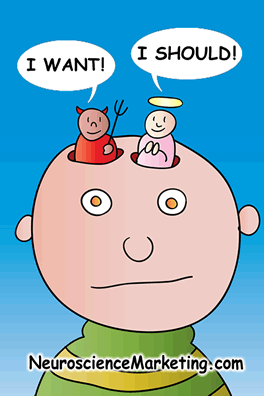Dynamic verbs vs. stative verbs
can cause confusion among studentsBut really they aren't as difficult or as complicated as you may think.
The most important reason you need to know about these is because stative verbs can't usually be used in the progressive form. But more about that later!
Firstly, what do the words "dynamic" and "stative" mean?
They aren't very common words in everyday English, but they are grammar terms you will need to know to understand this subject.
Dynamic
"Dynamic" is an adjective which means something is moving or changing. In English grammar a "dynamic verb" means that the verb describes an action rather than a state. Dynamic verbs are sometimes known as "action verbs."
"Joe is chasing the bus."


Stative
"Stative" is an adjective which describes something as having a state, or existing (this is a very uncommon adjective). In English grammar a "stative verb" means that the verb describes a staterather than an action.
Stative verbs are sometimes known as "state verbs."
"Kevin wants some ice-cream."


So now you know the meaning of the terms, let's look at some examples!
First, here is a list of some dynamic verbs. You can see that they are all used to describe an action, change, or process. Most of them are used to describe an activity which has a start and an end.
Examples of dynamic verbs:
- eat
- walk
- learn
- grow
- sleep
- talk
- write
- run
- read
- become
- go
Example sentences with dynamic verbs:
- "I can't talk right now, I'm eating dinner."
Present progressive used to describe an action happening now. - "Sorry, I'm out of breath because I've been running."
Present perfect progressive used to describe an action that started in the past, continued for some time and has results now. - "I didn't steal the necklace! I was sleeping when someone broke into the shop!"
Past progressive used to talk about an action that was happening at a particular time in the past.
Examples of stative verbs:
- love
- hate
- like
- prefer
- doubt
- seem
- know
- own
- understand
Correct: "I like chocolate, but I prefer cake."
Incorrect: "I'm liking chocolate but I'm preferring cake."
Correct: "I don't understand you when you speak quickly."
Incorrect: "I'm not understanding you when you speak quickly."
There are also some verbs that can be either dynamic or stative, depending on their meaning and context in the sentence. I'm sure you know by now that there are many words in English that can have more than one meaning!
Examples of verbs that can be either dynamic or stative:
- think
- mind
- have
- smell
- sound
Example sentences:
- "I think it is wrong to hit children."
Here, think is a stative verb. It means "to have an opinion" and it cannot be used in the progressive form in this case.
BUT
"I'm thinking about buying a new car."
Here, thinking is describing a process, or an action. This is something that is happening, rather than simply being. So here we can use the progressive form. - "I don't mind if we watch a movie tonight."
Here, mind means "be bothered by", which is a state of mind, not an action. Therefore, it is stative.
BUT
"I'm not being nosy. I'm minding my own business!"
Here, minding means "looking after" and is therefore a process and a dynamic verb. - "I have three brothers."
Have here talks about the family relationship the speaker has with her brothers and is therefore stative.
BUT
"I'm having a bad day today. I'll call you when things are better."
Having in this sentence means the speaker is going through the process of a bad day. It is therefore dynamic.
All this may seem complicated, but if you read and listen to as much English as you can, you will soon start to know which verbs sound right in the progressive. If you keep the basic idea of dynamic verbs vs. static verbs in the back of your mind, it will help you greatly.
Now, let's practice!

Dynamic verbs and stative verbs exercises
Reminder:- Actions that are in progress now => present progressive
Example: We are walking right now. - States that occur now => simple present
Example: We want to walk now.
WHAT ARE REPEATED COMPARATIVES?
1. Repeated comparatives
All of them are used to describe actions and things that are increasing or decreasing. In order to find more information about it you can review the website:
1.1 INCREASING
To indicate that something is increasing we can apply two structures: er and er / more and more.
a) …….er and …….er
To form this structure we have to add “er” to the adjective to form a comparative adjective. It is used with adjectives and short adverbs; such as, closer and closer, longer and longer.
Examples:
She is getting closer and closer of her mother.
By the end of the twentieth century, couples were waiting longer and longer to marry.
b) more and more
We can use this structure with long adjectives or adverbs ; for example, more and more difficult, more and more slowly.
Examples:
It’s becoming more and more difficult.
He is going more and more slowly.
1.2 DECREASING
In order to indicate that something is decreasing we can use the following structures: fewer and fewer, less and less.
a) Fewer and fewer
It is used with countable nouns.
Example:
Fewer and fewer children are leaving school.
b) Less and less
It is used with uncountable nouns and adjectives.
Example:
He needs less and less money everyday.
WHAT ARE DOUBLE COMPARATIVES?
2. Double comparatives
Double comparatives describe a cause and effect process. Also, they are written as a sentence with a comma separating the cause and the effect. The structure to use them is the following:
[the + comparative form] + (subject) + (verb), [the + comparative form] + (subject) + (verb)]
If you want to find more information about this kind of comparative you can check the website: https://englishwithdickandjane.wordpress.com/2012/05/16/double-comparatives-english-grammar/
Examples:
The more education women get, the later they marry.
The less children studied, the more slowly they learned.








